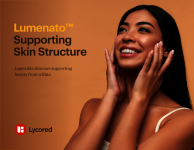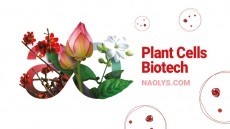Exclusive interview
Ayurvedic beauty in India part I: Mindfulness and wellbeing

Beauty within
Ayurvedic beauty is derived from the importance of health and beauty, and the idea that the skin is a reflection of our inner beauty.
Demand for natural, herbal and Ayurvedic beauty in India and the wider Asia-Pacific region is unsurprising as the region is “abundant in agriculture and Asian consumers have traditionally always been using indigenous plants and herbs in beauty regimes,” stated Joanna Chan, Research Analyst at Euromonitor International.
Incorporating this centuries-old way of life into the beauty industry was a progressive step that is now paired with consumers’ clean living priorities.
Natural and herbal benefits
Today, consumers are receptive to the applications and effectiveness of natural and herbal ingredients in beauty products, and therefore brands can raise awareness with informed and sophisticated marketing messages.
Natural positioning has a significant impact on consumer purchasing and loyalty. Chan went on to emphasise how brands such as AmorePacific’s Innisfree, Shanghai Jawa’s Herborist and Paragon Technology and Innovation’s Wardah “resonate well with Asian consumers and have been growing at exponential rates,” due to this natural stance.
Growing health consciousness among Asian consumers, along with new product developments launched by local and regional players are also key drivers in the industry. Wellbeing is a “megatrend” in Asia and is currently being promoted in various industries including food, drinks and beauty.
Now that the importance of wellbeing has made the crossover into the beauty industry, Asian consumers are mindful of the products they select and apply to their skin and hair.
Careful selection
“This leads them to scrutinise ingredients and take a preference for natural beauty products which they perceive to be safer and gentler,” Chan added.
Indian and Asian culture is playing a large part in the adoption and usage of Ayurvedic beauty: “Local and regional players leverage on Asian consumers’ cultural preference and incorporate familiar indigenous herbs and plants in the formulation of new product developments, driving natural beauty in Asia Pacific.”
Chan pointed out that Indonesia’s Juara Skin Care, for example, uses traditional herbal medicine referred to as Jamu in its skin care range. While Jamu is often used for treating illnesses, formulating it into skin care and implementing it into the cosmetics sphere appeals to consumers.
Can local overtake multinational?
Although large multinationals dominate in beauty and personal care, “the fastest growing brands in recent years are niche local or regional brands,” such as Amore Pacific’s Innisfree, Shanghai Jawa’s Herborist and Paragon Technology and Innovation’s Wardah.
Despite this, “multinational brands face imminent threats from local brands especially in facial care” and so must remain creative and innovative to be relevant and competitive.
Chan highlighted how Shanghai Pehchaolin Daily Chemical’s Pechoin’s brand’s ranking jumped from 33 to 4 in facial care in China. This overtook international brands such as Estée Lauder and Lancôme.
Similarly, Wardah in Indonesia was recognised as the third leading player in facial care in 2016. It climbed from a brand ranking of 21 in 2012 to surpass the popularity of giants including L'Oréal Paris and Garnier.
However, while these local players from China, India and Indonesia experience success, they tend to only “feature in their home markets and are slow to expand overseas”. Whereas, on a regional scale, “multinational players continue to lead in Asia Pacific as a whole”.
APAC dominance
The South Korean K-beauty trend continues to have a regional presence through multinational names such as AmorePacific and LG Household & Health Care, which has garnered many loyal consumers in Korea and is now expanding throughout APAC and into the West.








![Clariant has underscored the importance of localisation strategies and distribution capabilities in China with beauty trends evolving at a rapid pace. [Getty Images]](/var/wrbm_gb_food_pharma/storage/images/_aliases/wrbm_tiny/publications/cosmetics/cosmeticsdesign-asia.com/article/2024/04/16/clariant-emphasises-importance-of-localisation-in-the-era-of-viral-trends/17327969-1-eng-GB/Clariant-emphasises-importance-of-localisation-in-the-era-of-viral-trends.jpg)

![We dive into our most-read stories on formulation and science. [Getty Images]](/var/wrbm_gb_food_pharma/storage/images/_aliases/wrbm_tiny/publications/cosmetics/cosmeticsdesign-asia.com/headlines/formulation-science/skin-science-latest-stories-on-cosmetics-science-and-formulation/17334719-1-eng-GB/Skin-science-Latest-stories-on-cosmetics-science-and-formulation.jpg)

![Shopee says Vietnam has become a key market for K-beauty brands. [Getty Images]](/var/wrbm_gb_food_pharma/storage/images/_aliases/wrbm_tiny/publications/cosmetics/cosmeticsdesign-asia.com/headlines/market-trends/shopee-k-beauty-orders-to-vietnam-increase-more-than-five-fold-in-the-last-three-years/17319014-1-eng-GB/Shopee-K-beauty-orders-to-Vietnam-increase-more-than-five-fold-in-the-last-three-years.jpg)
![[Getty Images]](/var/wrbm_gb_food_pharma/storage/images/_aliases/wrbm_tiny/publications/cosmetics/cosmeticsdesign-asia.com/headlines/formulation-science/chinese-researchers-identify-igf2-in-oral-mucosa-as-key-factor-for-scarless-wound-healing/17328122-1-eng-GB/Chinese-researchers-identify-IGF2-in-oral-mucosa-as-key-factor-for-scarless-wound-healing.jpg)
![Th recent trend developments in the APAC beauty market. [Getty Images]](/var/wrbm_gb_food_pharma/storage/images/_aliases/wrbm_tiny/publications/cosmetics/cosmeticsdesign-asia.com/headlines/market-trends/what-s-trending-top-stories-on-apac-beauty-market-and-consumer-insights2/17319701-1-eng-GB/What-s-trending-Top-stories-on-APAC-beauty-market-and-consumer-insights.jpg)
![Native Extracts is seeking opportunities to work with China beauty brands. [Getty Images]](/var/wrbm_gb_food_pharma/storage/images/_aliases/wrbm_tiny/publications/cosmetics/cosmeticsdesign-asia.com/article/2024/04/11/native-extracts-aims-to-collaborate-with-c-beauty-brands-with-advanced-chinese-botanicals/17318852-1-eng-GB/Native-Extracts-aims-to-collaborate-with-C-beauty-brands-with-advanced-Chinese-botanicals.jpg)


